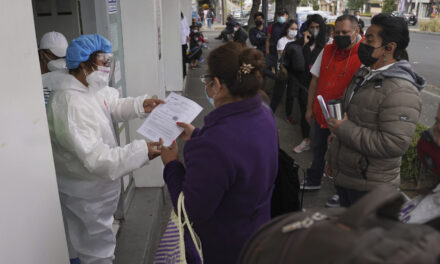
China’s economy is still growing. But the recovery is slowing

Hong Kong (CNN Business)China’s economy is still growing, but the pace of its recovery slowed in the second quarter as the country contended with surging commodity prices and supply chain disruptions.
GDP grew 7.9% in the April-to-June quarter compared with the same period a year ago, China’s National Bureau of Statistics said Thursday.
That rate of growth was significantly slower than the 18.3% year-on-year increase China registered in the first quarter — though that record-breaking figure largely reflected how much the economy slumped in early 2020, as the coronavirus pandemic was taking hold.
The latest figure was also a bit weaker than expected. Analysts polled by Reuters predicted that China’s economy would expand 8.1% in the second quarter.

Because China’s initial recovery last year was so rapid, the country has “basically fully recovered,” said Julian Evans-Pritchard, senior China economist for Capital Economics.
“In fact, it’s above its pre-virus trend,” he told CNN Business. “There’s just a lot less room for it to continue to grow rapidly, so it’s hitting against those constraints, and that’s why we’re starting to see those growth rates weakened quite considerably.”
Recent warning signs
The Chinese economy has been flashing some troubling signs in recent months. Record commodity prices drove factory inflation to the highest levels in more than a decade, while supply chain disruptions caused by shipping backlogs and an energy shortage held back factory production.
Growth in the services sector has also slowed recently, as a Covid-19 outbreak in southern China and subsequent containment measures curbed consumer and business activity.
“We are facing a complicated domestic and international environment, especially a rise in commodity prices, which has put significant cost pressure on business,” said Liu Aihua, an NBS spokeswoman, at a press conference in Beijing on Thursday. She cited a need to “properly handle” risks and help small and medium-sized businesses grow.
The government also released data showing that some production has slowed in recent month. Industrial output increased 8.3% in June from a year prior, slightly easing from May’s 8.8% growth. Output in auto manufacturing dropped more than 4% last month, compared to a year earlier, which Liu attributed mainly to the ongoing chip shortage.
Uneven recovery
Domestic demand, though, remains the weak link, according to Yue Su, principal economist for The Economist Intelligence Unit.
Retail sales growth slowed to 12.1% in June, down from 12.4% in May, according to the data released Thursday. That’s the slowest rate of growth this year.
“China’s Q2 GDP data continues to indicate uneven recovery,” Yue said, adding that retail sales haven’t yet recovered to trends seen before the pandemic.
She said reviving domestic demand is going to be “challenging,” as households are still stuck with budgeting their limited time and money.
Unemployment is also cause for concern.
The urban unemployment rate held steady at 5% in June, unchanged from May. But the jobless rate among young people increased, jumping to 15.4% for those between the ages of 16 and 24 by the end of June, compared with 13.6% three months earlier.
“We are indeed facing big employment pressure,” said Liu from NBS, noting that the number of university graduates hit a new record of nearly 9.1 million people this year. “We must continue to give priority to stabilizing employment and create more jobs.”
Still on target
Even though the recovery of the world’s second largest economy is pulling back, China is still on track to exceed its annual growth target this year.
“Overall, China’s economy looks to be on track for recovery, with the 6% annual growth goal in reach,” Chaoping Zhu, global market strategist for JP Morgan Asset Management, wrote in a Thursday research note. Beijing set that growth target in early March as it signaled a need to get back on track with President Xi Jinping’s longterm goals for the economy.
The country has also enjoyed some other good news recently. On Wednesday, the National Health Commission said that China has administered more than 1.4 billion doses of Covid-19 vaccines, meaning the country has vaccinated half of its population with at least one dose.
And earlier this week, Beijing said that exports surged more than 30% in June compared with the same period in 2019, a sign that global demand for Chinese-made goods is strong.
“Resilient external demand could help offset some domestic pressure and support aggregate growth, even if strong export growth looks unsustainable,” Zhu said.
— Kristie Lu Stout and CNN’s Beijing bureau contributed to this report.
Source: http://rss.cnn.com/~r/rss/cnn_topstories/~3/5lwecUlDFYg/index.html
















